Olympian Profile: Meagan Duhamel & Eric Radford
Long before Meagan Duhamel and Eric Radford started to skate together, they knew each other. They both grew up in small northern communities, she from Lively, Ontario, (population 7,000) and he from Balmertown, Ontario, (population 1,000) which is as far north as you can go by train in northern Ontario.
“Balmertown makes Lively look like New York,” Duhamel would joke. They never dreamed of a partnership. Radford is tall and lean with classical lines, Duhamel tiny and muscular with an athletic style. “If I had ever thought of somebody I could skate with,” she said. “I would never have even thought of skating with Eric because we were so different.”
Both ended up skating in Montreal and when Duhamel’s former partner, Craig Buntin retired, Buntin suggested to them that they try out together. Strangely enough, Duhamel had no intention to continue skating after a disappointing season in which she and Buntin missed a berth to the 2010 Olympics.
“That year was a nightmare all around,” Duhamel said. “I had a stress fracture and a bulging disk in my back for a year and a half. I had nerve damage in my leg. And with the stress of the Olympics and everything, I just didn’t want to live through anything like that again.” She took eight weeks off at the end of the season – and then eventually found herself waking up every morning with no pain. She rediscovered the joy of skating.
Radford, meanwhile, had had a discouraging pair career, and had travelled the world, trying to find his niche, even training for a time with Ingo Steuer. “I feel like I’ve waited a while to get to the level that I felt I could be at,” he said. With Duhamel, he was finally where he wanted to be: a contender on the world stage, not just there to compete. “It’s been a big and exciting change for me,” he said. “It totally changed my entire outlook on skating.”
They had doubts in the beginning. After their first tryout, they were skeptical. Coach Richard Gauthier asked them to give it a week and assured them it would work out. In less than a week, they found that everything was just so easy.
Duhamel found it fun. “When I used to close my eyes and dream about skating, I would envision being able to skate freely, like so light, instead of being so heavy,” she said. “How we skate is how I’ve always dreamed I could do.”
Duhamel and Radford joined forces to get to the Sochi Olympics, but along the way, they’ve become three-time Canadian champions and world bronze medalists, always with a close eye on the points, as indicators of the steps they need to get to the top. Where she was weak, he was strong and vice versa. They filled each other’s holes “and met right in the middle,” Duhamel said. He’s into music, she’s a registered holistic practitioner and a vegan.
Always strong singles skaters, they have powered onto the international scene with some of the toughest tricks in the business. Duhamel was the first to land a throw triple Lutz with an earlier partner and she and Radford adopted it too. It’s still rare. No other skaters attempt side-by-side triple Lutzes, either. That carried them far, and then they started to do acting classes to bring out their relationship on ice.
It hasn’t been clear sailing. Radford found it surreal to defeat four-time world champions Aliona Savchenko and Robin Szolkowy of Germany for the first time in the short program at the 2013 world championships, particularly since he had once trained with them and had looked up to them. Then the Canadians narrowly defeated the Germans on the technical mark in the long program. But others had thundered into contention, too, namely Russians Tatiana Volosozhar and Maxim Trankov, who’s every move is big, spectacular and good for maximum grades of execution.
Duhamel and Radford encountered stiff adversaries at home, too, in Kirsten Moore-Towers and Dylan Moscovitch, who defeated them in the long program at Four Continents last year, and who actually drew a higher technical mark than their fellow Canadians in the long program at the world championships.
Over the past two years, Duhamel and Radford have had to break Canadian-record performances turned in by Moore-Towers and Moscovitch to win their Canadian titles. They came to the table with two outstanding routines this year, the short program to “Tribute” a musical composition created by Radford himself to honour Paul Wirtz, one of his coaches who died some years ago, and their winsome “Alice in Wonderland” routine for the long. They finished both programs with a great deal of emotion – their best efforts of the season. They tend to hit their peak at nationals, not early in the season.
“I think it was the best long we’ve ever skated,” Duhamel said. Those efforts were especially gratifying after a rocky early season. Duhamel and Radford were first after the short at Skate Canada International in Saint John, N.B., then were taken aback to finish third after making several mistakes and getting a standing ovation in the long. Their Grand Prix in France had mistakes too, but they took the silver medal and got to the Grand Prix Final, which didn’t go as they hoped. There, they finished fifth in the short and sixth in the long.
“Being successful at skating is kind of like a puzzle,” Duhamel once said. “If we have one piece missing, we have such a great coaching staff, and great choreography and we have each other. I think all of the pieces will fall into place.”
Want to read more about the figure skaters who will compete at the 2014 Olympic Games in Sochi? Pick up Beverley Smith’s new book SKATING TO SOCHI! The book profiles the top 40 athletes/teams with full-colour photos! Order online: Amazon.com, Lulu.com (ebook) or iTunes (ebook).
Beverley Smith


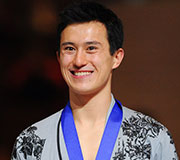
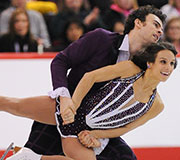
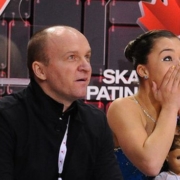
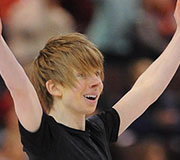
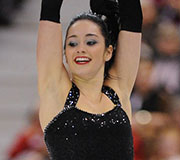
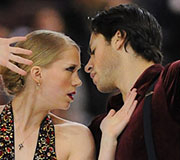
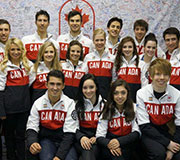
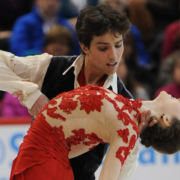


Leave a Reply
Want to join the discussion?Feel free to contribute!